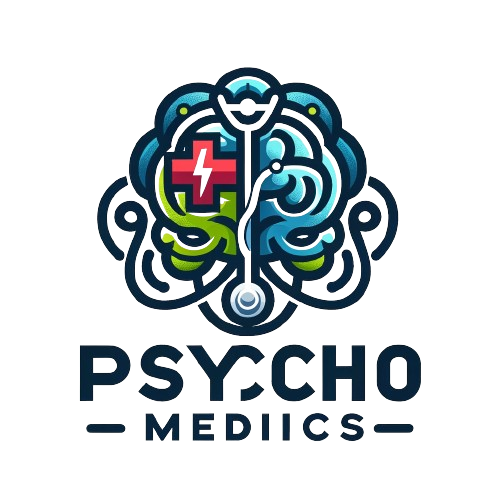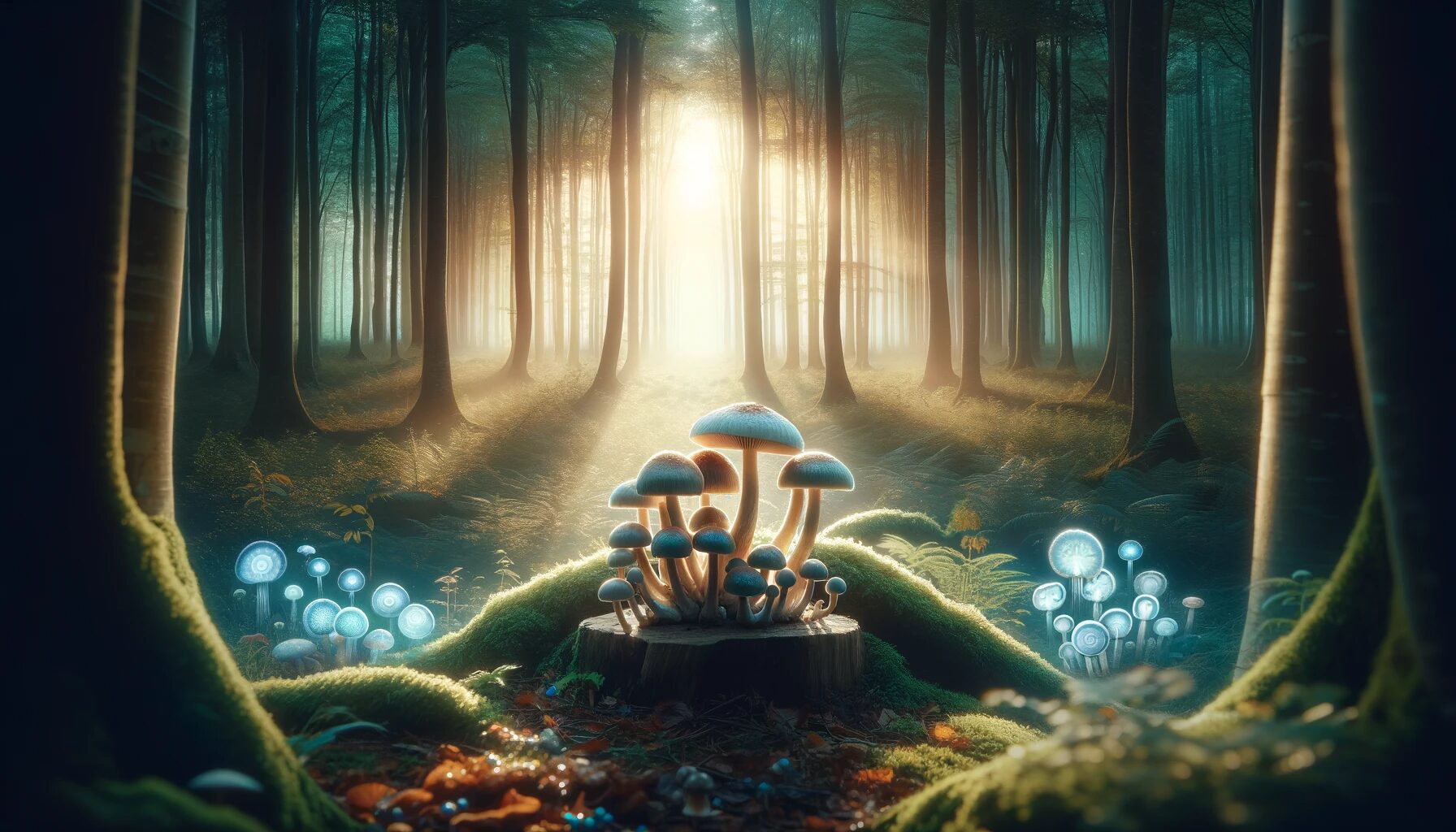The quest for mental wellness has led humanity down various therapeutic paths, some traditional and others quite unconventional. In recent years, the world of mental health has seen a burgeoning interest in alternative treatments that challenge conventional approaches. Among these, psilocybin, a naturally occurring psychedelic compound, has garnered significant attention for its potential in treating various mental health conditions, particularly anxiety.
The Rise of Alternative Treatments
The journey towards understanding and treating mental health conditions has been a complex one. Traditionally, treatment methods have largely revolved around pharmaceuticals and psychotherapy. However, these approaches do not always yield satisfactory results for all individuals, leading to a growing interest in alternative therapies.
This shift is partly due to the increasing awareness of the limitations and side effects of traditional psychiatric medications. Moreover, the desire for more holistic and natural treatment options has steered both researchers and the public toward substances like psilocybin. The appeal of these substances lies not only in their perceived naturalness but also in their potential to provide profound, transformative experiences that could lead to significant improvements in mental well-being.
Overview of Psilocybin
Psilocybin is a psychoactive compound found in certain species of mushrooms, commonly referred to as “magic mushrooms.” This compound is known for its ability to induce altered states of consciousness, characterized by changes in perception, mood, and thought patterns. Historically, psilocybin has been used in religious and spiritual rituals, and more recently, it has become the subject of scientific research for its potential therapeutic benefits.
The interest in psilocybin as a treatment for mental health conditions stems from its unique mechanism of action on the brain. Unlike traditional antidepressants that typically target the serotonin pathways, psilocybin offers a more holistic approach, affecting multiple neural pathways. This action can result in a temporary loosening of the rigid patterns of thought and perception often associated with mental health disorders like anxiety, depression, and PTSD.
What Are Magic Mushrooms?
Magic mushrooms, a common name for a group of fungi containing the psychoactive compound psilocybin, have captivated human interest for centuries. These mushrooms belong to the genus Psilocybe, among others, and are renowned for their ability to induce profound changes in consciousness, perception, and mood.
History and Cultural Significance
The history of magic mushrooms stretches back to ancient times, with evidence suggesting their use in religious and spiritual rituals in various cultures. In Mesoamerica, for instance, indigenous peoples have used these mushrooms in sacred ceremonies, viewing them as a means to commune with the divine. These practices were deeply rooted in their cultural and spiritual beliefs, with the mushrooms revered as sacred tools for enlightenment and inner exploration.
The modern Western world’s interest in magic mushrooms began to surge in the mid-20th century, largely influenced by the counterculture movement of the 1960s. Researchers like R. Gordon Wasson and later Timothy Leary popularized these fungi, highlighting their potential for psychological exploration and self-discovery. This period marked the beginning of scientific interest in the therapeutic potential of psychedelics, including psilocybin, although this research was largely halted in the following decades due to legal restrictions.
Different Types and Their Properties
There are over 180 species of mushrooms that contain psilocybin, each with varying levels of psychoactive compounds. The most well-known species is Psilocybe cubensis, popular for its relatively high concentration of psilocybin and ease of cultivation. Other notable species include Psilocybe semilanceata (liberty cap), known for its potency and widespread availability in nature, and Psilocybe azurescens, which is recognized for being one of the strongest psilocybin-containing mushrooms.
The psychoactive properties of these mushrooms stem primarily from psilocybin and psilocin, a related compound. When ingested, psilocybin is converted into psilocin, which then interacts with the serotonin receptors in the brain. This interaction is responsible for the altered states of consciousness typically experienced during a psychedelic trip, which can include visual and auditory hallucinations, emotional shifts, and profound changes in perception and thought.
The effects of magic mushrooms can vary greatly depending on the species, dosage, individual’s mindset, and environmental setting. While many report positive, life-affirming experiences, there is also the potential for challenging experiences, often referred to as “bad trips,” especially in unsuitable settings or among individuals with certain psychological conditions.
Understanding Anxiety Disorders
Types of Anxiety Disorders
Anxiety disorders encompass a range of conditions characterized by excessive and persistent fear or worry. These include Generalized Anxiety Disorder (GAD), characterized by chronic anxiety without a specific focus; Panic Disorder, known for sudden episodes of intense fear; Social Anxiety Disorder, involving overwhelming anxiety in social situations; and specific phobias, which are intense fears of specific objects or situations. Each of these disorders affects individuals differently and can significantly impair daily functioning and quality of life.
Traditional Treatments and Their Limitations
Conventional treatment for anxiety disorders typically includes a combination of psychotherapy and medication. Cognitive-behavioral therapy (CBT) is a common therapeutic approach, aiming to change negative thought patterns. Medications like selective serotonin reuptake inhibitors (SSRIs) are often prescribed to manage symptoms. However, these treatments don’t work for everyone. Some patients experience limited improvement, and significant side effects, or struggle with the long-term nature of these treatments.
The Science Behind Psilocybin and Anxiety
How Psilocybin Works in the Brain
Psilocybin’s potential to treat anxiety lies in its unique interaction with the brain’s serotonin receptors, particularly the 5-HT2A receptor. This interaction is thought to disrupt the default mode network (DMN), a brain network associated with self-referential thoughts and rumination – factors often heightened in anxiety disorders. By modulating this network, psilocybin can provide a ‘reset’ effect, offering a new perspective and reducing anxiety symptoms.
Key Research Findings
Recent studies have shown promising results in using psilocybin to treat various forms of anxiety, particularly in the context of life-threatening diseases like cancer. Patients report significant and lasting reductions in anxiety and depression, often describing their experience with psilocybin as one of the most meaningful in their lives.
Personal Stories: Transformations with Psilocybin
Case Studies and Personal Experiences
Numerous personal accounts highlight the transformative impact of psilocybin on individuals’ mental health. These stories often describe profound insights and emotional release during psilocybin experiences, leading to long-lasting improvements in anxiety symptoms and overall well-being.
Impact on Individuals’ Mental Health
The anecdotal evidence from these personal stories is increasingly supported by clinical research, indicating that psilocybin therapy can lead to significant and enduring improvements in mental health, particularly for those who have found little relief from traditional treatments.
Legal Landscape and Access to Psilocybin
Current Legal Status Around the World
The legal status of psilocybin varies globally, with it being classified as a controlled substance in many countries. However, recent years have seen a shift, with some regions decriminalizing or approving its use for therapeutic purposes under controlled settings.
How to Access Treatment Safely and Legally
For individuals interested in psilocybin therapy, it’s crucial to stay informed about the legal status in their region and seek treatment only through legal and ethical channels, such as clinical trials or approved therapy programs.
Safety and Risks: What You Need to Know
Potential Side Effects
While psilocybin is considered relatively safe physically, it can pose psychological risks, particularly for individuals with a personal or family history of psychosis. Side effects can include transient anxiety during the experience, known as a “bad trip”.
Guidelines for Safe Use
To minimize risks, it is recommended to use psilocybin in a controlled, therapeutic setting under the guidance of trained professionals, ensuring proper screening, preparation, and integration of the experience.
Comparing Psilocybin with Traditional Therapies
Efficacy Comparison
Studies suggest that psilocybin may offer rapid and sustained relief from anxiety symptoms, contrasting with traditional therapies that may take longer to show effects and might require ongoing treatment.
Integrating Psilocybin into Existing Treatment Plans
There is growing interest in combining psilocybin therapy with traditional treatments, such as CBT, to enhance overall effectiveness and provide a more comprehensive approach to mental health care.
Future of Psilocybin in Mental Health Treatment
Ongoing Research and Potential Developments
Research into psilocybin’s therapeutic potential is expanding, with studies exploring its use for various mental health conditions, including major depression, PTSD, and substance abuse disorders.
The Role of Psilocybin in Future Mental Health Care
As research progresses, psilocybin could become a valuable tool in mental health treatment, offering an alternative for those who have not benefited from traditional therapies.
Conclusion:
Psilocybin stands at the forefront of a paradigm shift in mental health treatment. Its unique ability to ‘reset’ thought patterns associated with anxiety, combined with its profound psychological effects, positions it as a potential game-changer for those who haven’t found relief through conventional therapies. The personal stories of transformation and ongoing research underscore its potential, though its integration into mainstream mental health care requires careful consideration of legal, ethical, and safety aspects.
FAQs
Q1: What is Psilocybin?
- A1: Psilocybin is a psychedelic compound in certain mushrooms, used in therapy to treat mental health issues like anxiety.
Q2: Is Psilocybin legally used for therapy?
- A2: Its legal status varies, with some regions allowing medicinal use under strict conditions.
Q3: What are Psilocybin’s risks?
- A3: The main risks include psychological effects, especially for those with a history of psychosis. It’s safest under professional supervision.
Q4: How does Psilocybin compare to traditional treatments?
- A4: It may offer faster, more lasting relief for some, especially those unresponsive to conventional treatments.
Q5: Can Psilocybin be combined with other therapies?
- A5: Yes, integrating it with therapies like CBT is being explored for enhanced effectiveness.

Alex is a seasoned writer and researcher, specializing in psychedelic studies and mental health. Known for insightful and authoritative content, he combines extensive knowledge with a passion for exploring wellness and alternative therapies. Alex’s work is a trusted resource for readers delving into the world of mental well-being.


Leave a Reply